If there’s one thing that excites me the most, it is donning the safety helmet and getting up close to machines. Every screw, spindle, cog, every part is there for a reason and absolutely nothing exists without purpose. Machines are inspiring. So when I had an incredible chance to see a beast of a machine from inside, I jumped at the opportunity. I paid a fortune, but it was totally worth it. It was a boat lift!
I decided to grab my bicycle for this little tour of mine and it was a good decision. One of the best things about trains here is that there’s dedicated space for bicycles. So I could hop on and off the train and get on the bicycle to wherever I want to go. But first what in the world is a boat lift?

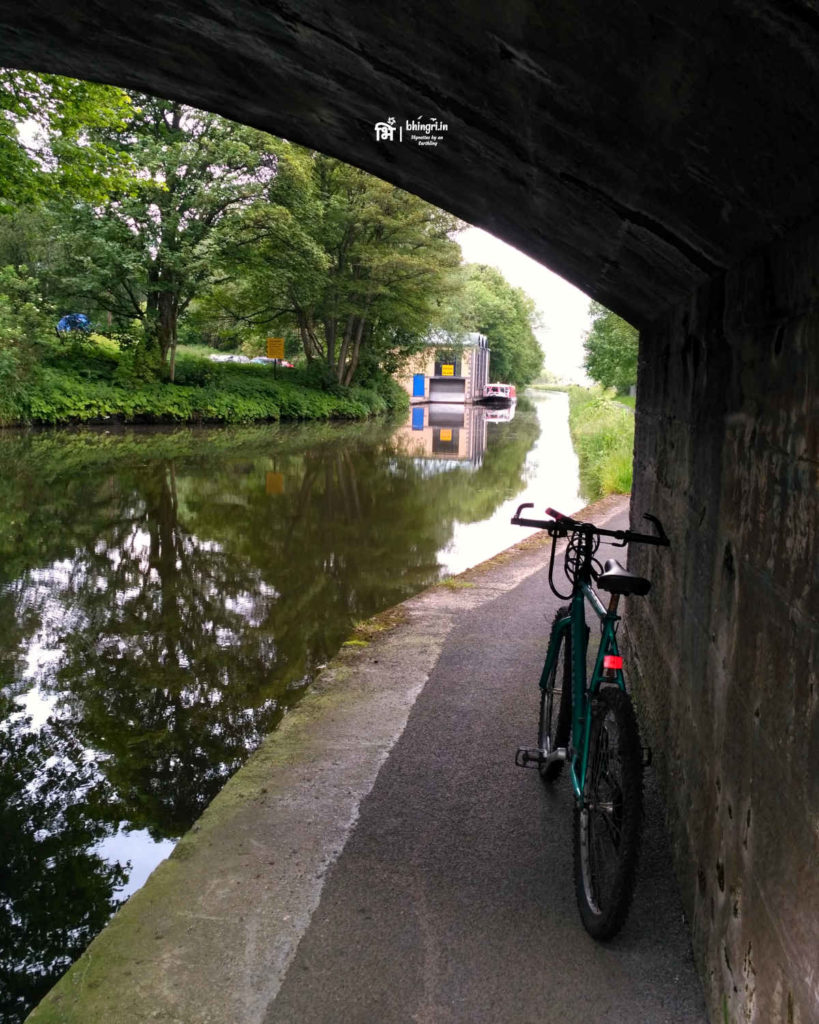
What is a Boat Lift?
Well, simply put, a Boat Lift would be a lift or an elevator for the boats that have to change elevation. Now, why in the world would you need to change elevation, doesn’t water achieve the same level everywhere? Umm, yes, Pascal’s principle is still valid and equilibrium persists, but certain geographical (or manmade) situations are interesting. For example, have you heard of the Three Gorges Dam? This is a huge dam on the Yangtze river in China. Since many ships use the river and need to travel upstream of the sam as well, the Chinese built a parallel canal and lock system to transfer the boats from downstream to upstream. Recently, they operationalised a boat lift that can bypass the locks.
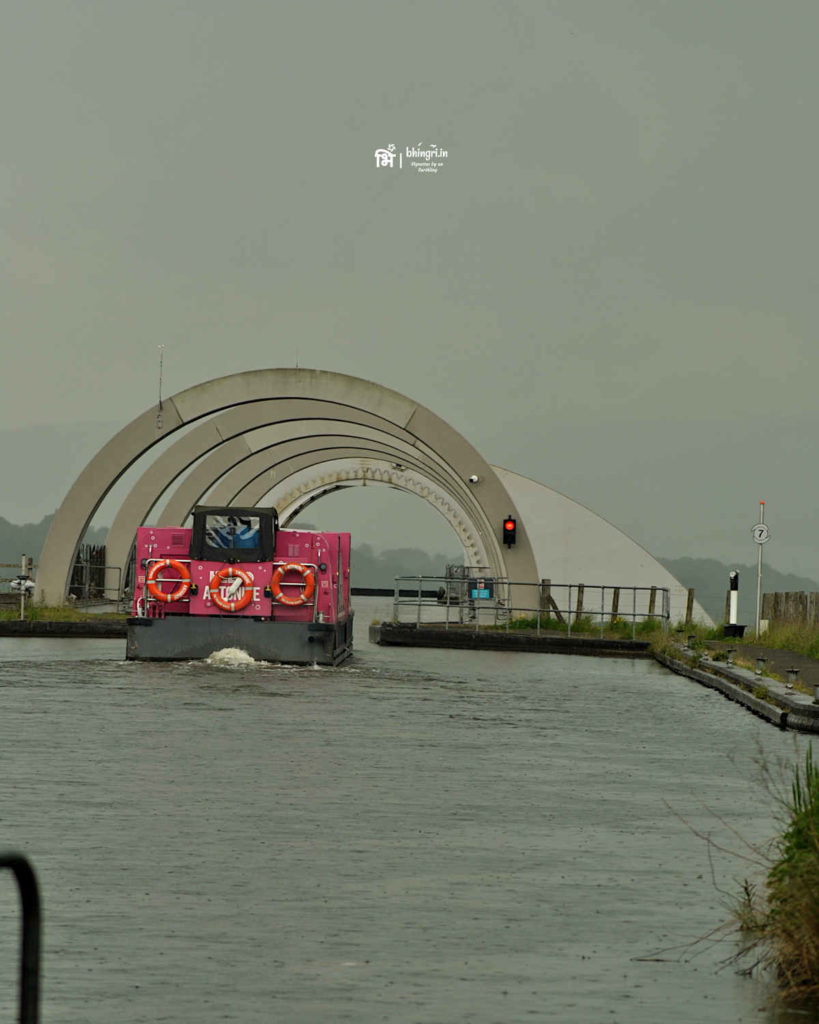
The mechanism to push boats through such a situation is also fascinating. But I’ll write a separate blog post about it when I visit China! For now, am talking about a “rotating” boat lift that transfers boats from one canal to another through about 34m of elevation. This is world’s first and only rotating boat lift. Its engineering is simple yet effective and I think it looks insanely beautiful.

Falkirk Wheel: A Rotating Boat Lift
There is a cozy little town midway of Glasgow and Edinburgh called Falkirk, where this boat lift is. I was really amazed and excited when I read about this boat lift an year ago. I wanted to visit but it didn’t really happen for a long time. Last week, I was lucky enough to notice a special Internal Tour of this famous tourist spot and I jumped in my chair (..or bed…I don’t remember now). I instantly booked my place on this exclusive tour even though it ate a bit in my “going home fund”. And boy, what an experience it was!
Two major canals flow through the town of Falkirk: the Union canal and the Forth and Clyde canal. But 20 yeas ago they were disjoint by elevation as well as distance. So engineers wondered if it possible to connect them; it would save a lot of time for ships that wanted to travel between the west coast and east coast. So a new project was commissioned and the wonderful design of Falkirk wheel was born.
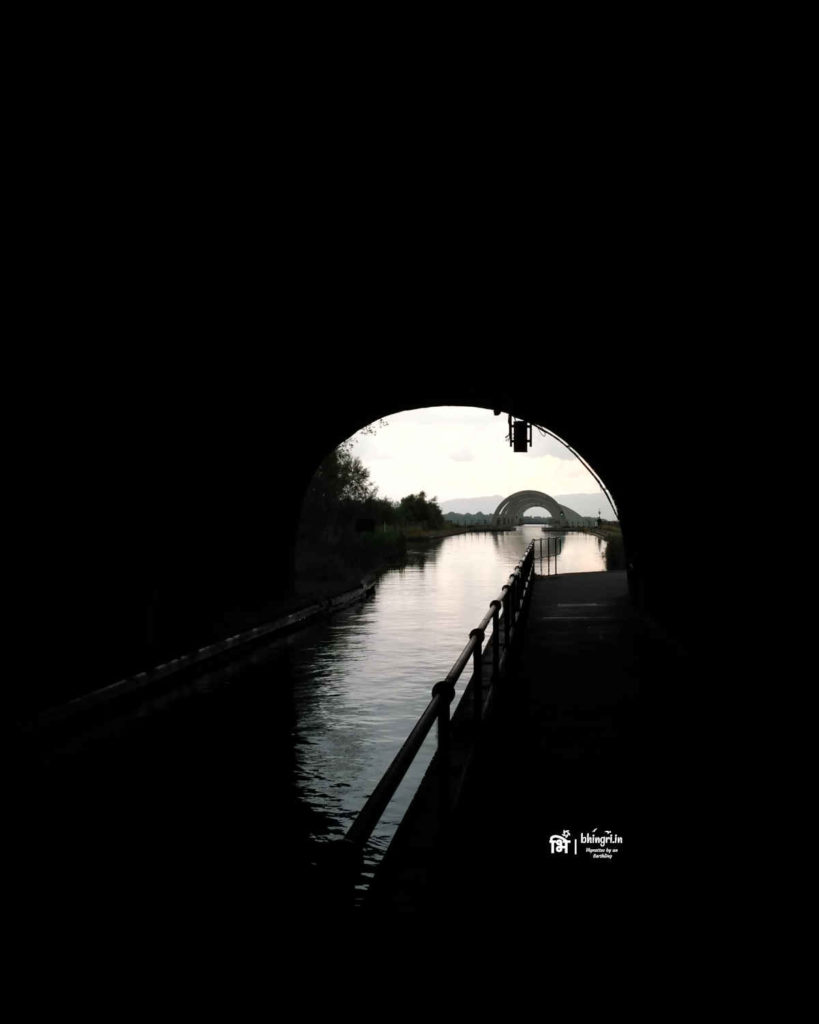

I‘ll also leave a video here since watching the lift in operation is very intriguing, something that photos can’t do justice to. Here’s a time-lapse clip from YouTube.
Inside the Wheel
When I say “inside”, I don’t mean being inside one of the boats, I mean e.g. inside the axle of the lift! I was part of a very small group of 10 curious people (everyone other than me was over 50 year old!) who were lead to the control room of the lift first. Later we went inside the structure and learnt about the mechanism on which the lift works. This is not a technical blog so I’ll leave out the details but drop some interesting facts here.
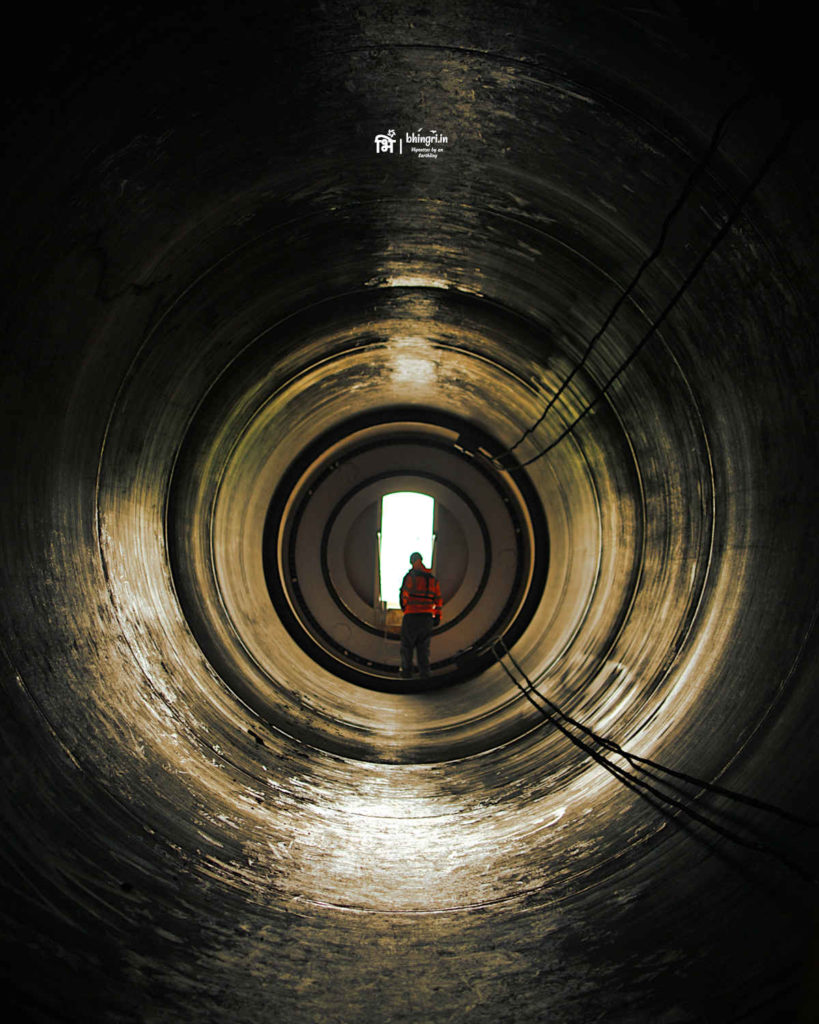
The rotating lift has two gondolas (pan-like platforms) on the two ends of an arm. That’s where the boats go, along with the water around them. Once they are secure, the gondolas are locked. Then they pump put the water in the gap and now the boats are ready to be transferred. The central gear is mounted on the axle and one more pair of cogs are mounted on the arm. The axle and the arm are rotated by a series of hydraulic motors and as the lift begins its rotation, the gondolas are held horizontal (because there are boats inside!) ingeniously by allowing them to rotate within the arm under gravity! How effing beautiful is this design!
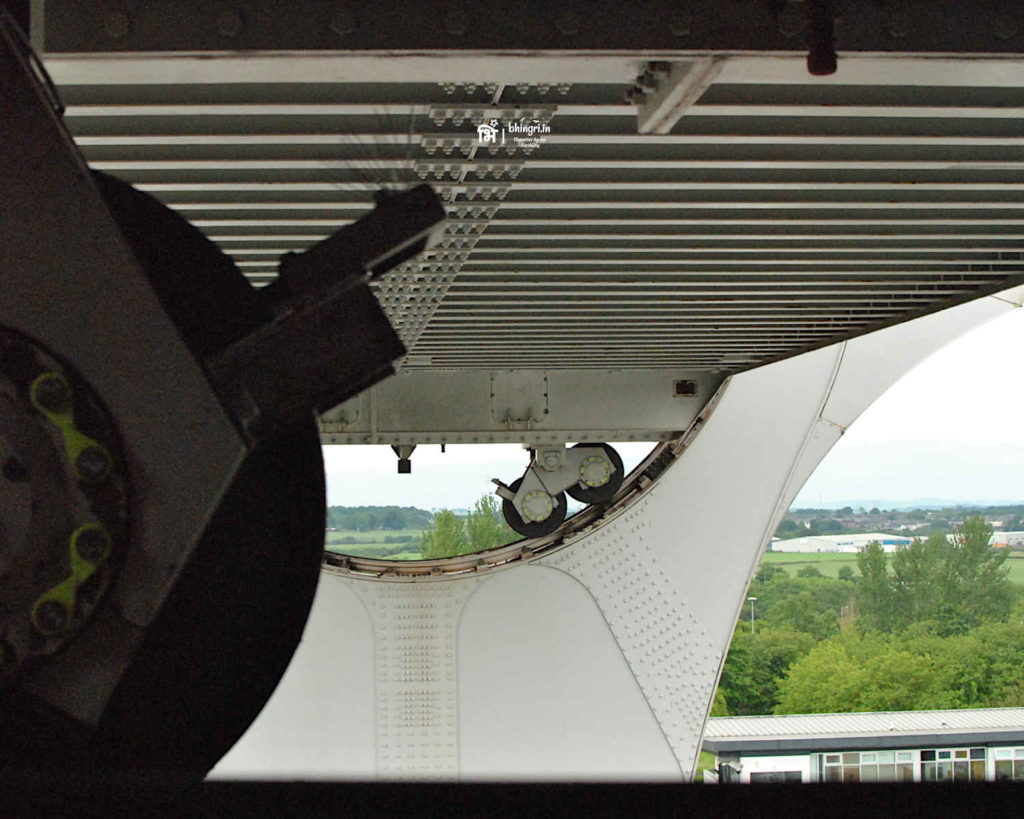
The gondolas each weigh 300 tonnes, that’s a herd of 300 Indian Bisons (and rotated by 180 degree) on each end. Guess how much power the lift needs? 1.5 kW. Yes, you read it right! That’s about the same power just 10 Sodium vapor street lamps need or 8 domestic kettles little or less than what Usain Bolt exerts in his 100m sprints. That’s how cheap it is. And with this power the lift rotates by 180 degree in under 5 minutes! The Falkirk wheel is insanely beautiful and a true engineering marvel of modern times.

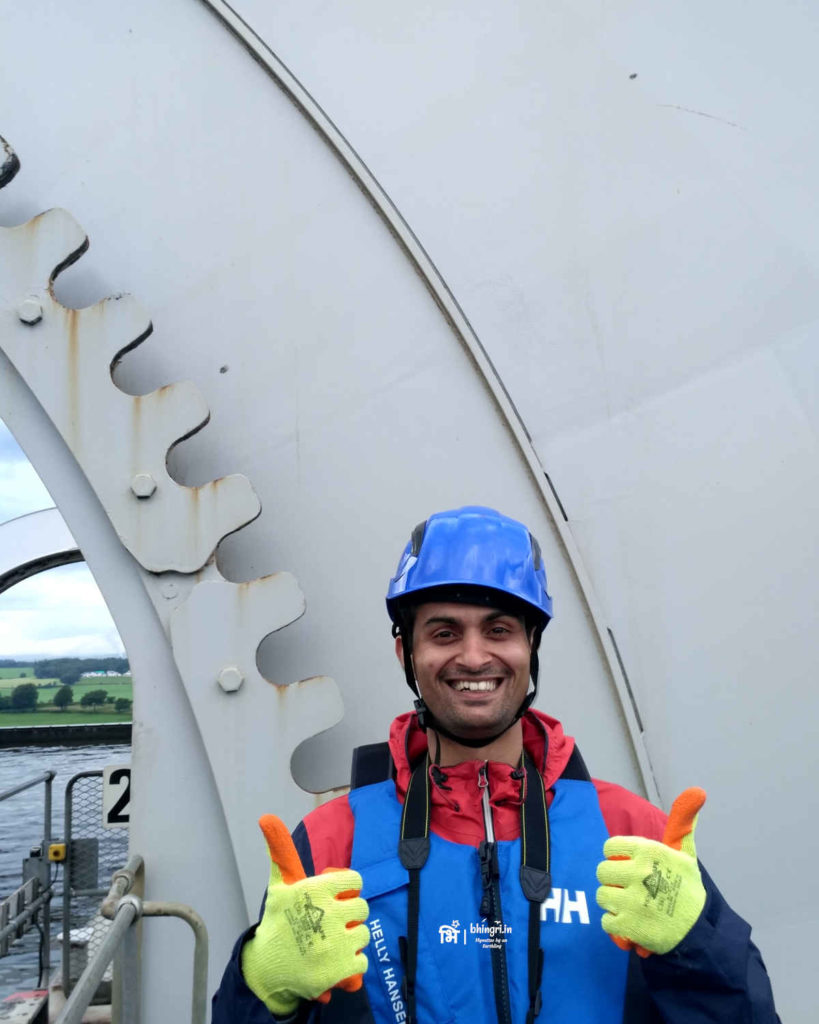
The Falkirk wheel also happens to be very close to the location of the Iron Age Antonine Wall I wrote about in April. Have you read it yet? Antonine Wall: The Last Roman Frontier
The Kelpies

Not far from the Falkirk Wheel are the iconic sculptures of Celtic mythical spirits by the name of Kelpies. The Kelpies are huge shimmering horse heads standing tall as if they are guarding the canal. They also represent the towpath horses that people used to tow the boats through canals before powered boats existed. I wonder if there’s any good photograph from that era. The route to the Kelpies is scenic along the Forth and Clyde canal.

One of the best things I have discovered in Scotland is cycling along the canals. The canals not only support a fantastic ecosystem but also take us humans closer to nature. At some point I’ll write about them in one of my blogs; there are some very interesting features that these canals have. If you are visiting Scotland I highly recommend a canal tour and definitely a day at Falkirk Wheel and the Kelpies.


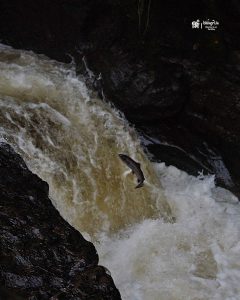

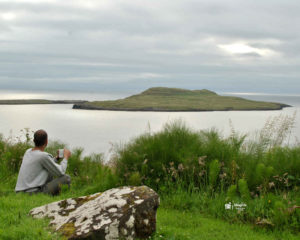
Awesome yaar miss hanging out and having this crazy wild adventures . We had one in surat early morning
Yup, that was fun! 🙂
Awesome blog deepuda…love your blogs👌
Haha, thanks mate!
Do subscribe; there’s a short email form on each post/page at the bottom.